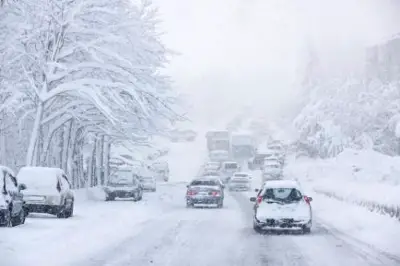GEICO Wants You to Stay Safe During Winter Driving Months
 |
WASHINGTON -- January 22, 2016: Winter may have already visited your part of the country or it may be on the way. In order to prepare for winter weather driving, GEICO would like drivers to review these tips and avoid bad habits that pose a risk to their safety.
Winter Driving Bad Habits
- Leaving snow on the roof: Most drivers dread standing out in the elements to clean snow off a vehicle, but it's important not to cut corners and stop with the windows and lights. Snow left on the roof can fly off in large chunks while the car is moving, striking other vehicles and obstructing views or causing damage. Some states will even issue citations for cars with improperly cleared roofs.
- Driving on bald tires: Worn tires won't grip the road sufficiently, making a vehicle more susceptible to sliding on snow and ice. NHTSA recommends having tires with tread depths of at least 2/32 of an inch or greater on all tires. Additionally, check to make sure all tires are inflated to the correct pressure to ensure optimal performance.
- Following too closely: All vehicles need more distance to stop on snow-covered and icy surfaces compared to dry roads. When driving in slippery conditions, always increase your following distance.
- Passing a plow: Operators are focusing on snow removal, and may not see you if you attempt to pass. Additionally, some plows are wider than the actual lane, adding to the risk of passing. The Missouri Department of Transportation recommends staying four car lengths behind a plow so it has ample room to work.
- Driving when conditions become too hazardous: NHTSA recommends waiting to travel until the worst weather subsides if possible. Staying off the roads allows snow removal equipment to work more efficiently, and leads to more passable streets once you venture out later.
Whenever road conditions become treacherous, remember to take it slow. Additionally, since driving in bad weather requires heightened awareness, eliminate all potential sources of distraction while behind the wheel.


